Sustainable Living Ideas to Embrace as we Emerge Into a New “Normal”.
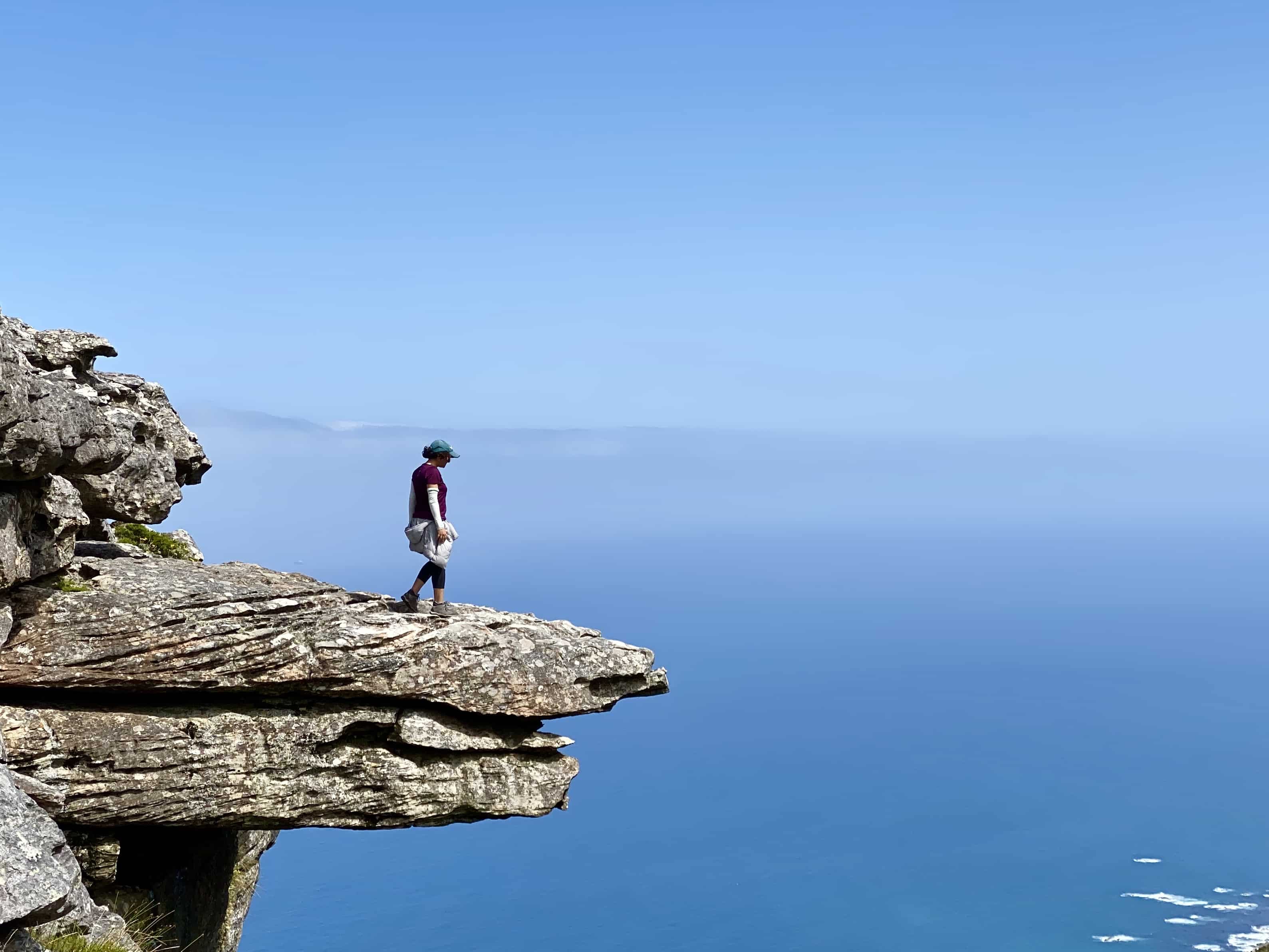
In the midst of a pandemic, all roads seem to point towards a life that is more mindful and compassionate. Some easy sustainable living ideas to get started.
The past 50+ days of lockdown living have been an emotional roller coaster.
I’ve felt a deep longing to be in the midst of nature. The forests, the mountains, the sea, I’ve craved them all. This longing made me realize that I never fully appreciated the freedom (and privilege) to experience the incredible beauty of our world. It equally made me dwell on my environmental footprint as an inhabitant of a shared planet.
In the midst of a pandemic linked to deforestation, biodiversity loss and intensive animal farming, all roads seem to point towards embracing sustainable living ideas that are kinder towards the planet and the beings we share it with.
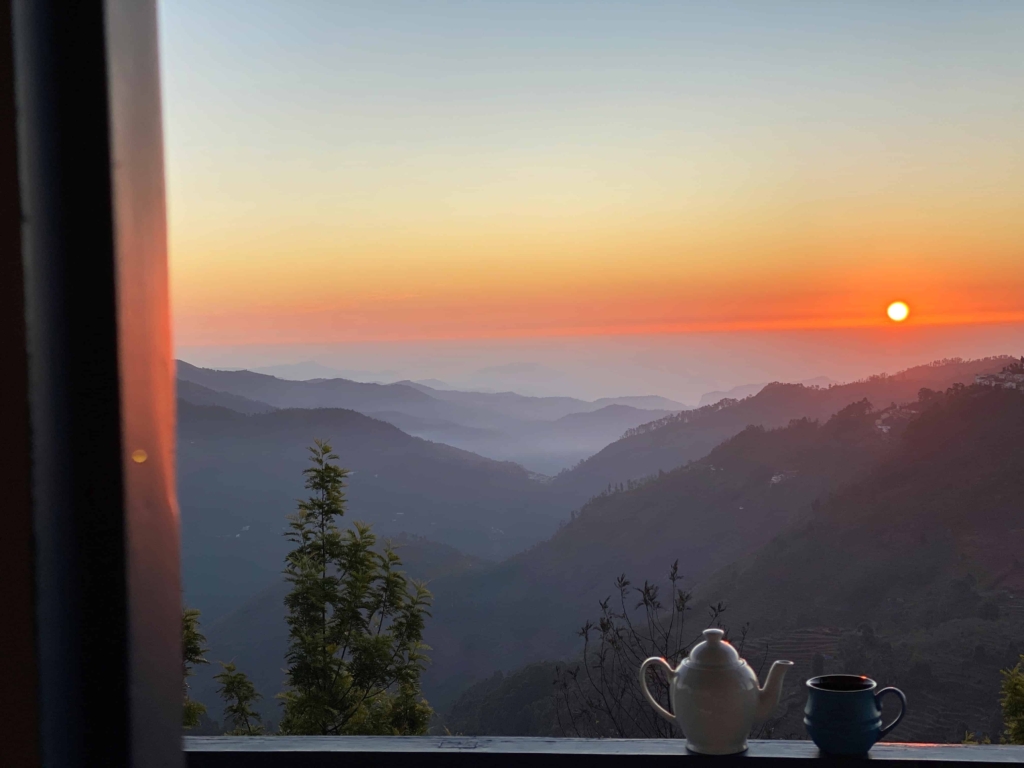
Will adopting sustainable living ideas at an individual level make a difference in the big picture?
We only need to look at the past for inspiration. Many social and political transformations came about as a result of mass movements that began with individual awareness and personal choices. The more invested we become in sustainable living as individuals, the more likely we are to drive change as a society.
For those of us not directly affected by the on-going crisis, this slowdown can be a chance to make small but lasting changes towards a sustainable way of life.
Sustainable living tips to get started:
- 1. Begin your journey towards minimalism – one of the most important green living ideas
- 2. Segregate, compost, reduce and recycle your waste
- Switch to a menstrual cup
- 4. Creatively reuse and recycle what you already have
- 5. Embrace a compassion-driven lifestyle
- 6. Grow your own microgreens and other food
- 7. Catch up on the health of the planet
- Have you committed to any sustainable living ideas during the lockdown? What do you plan to try?
1. Begin your journey towards minimalism – one of the most important green living ideas
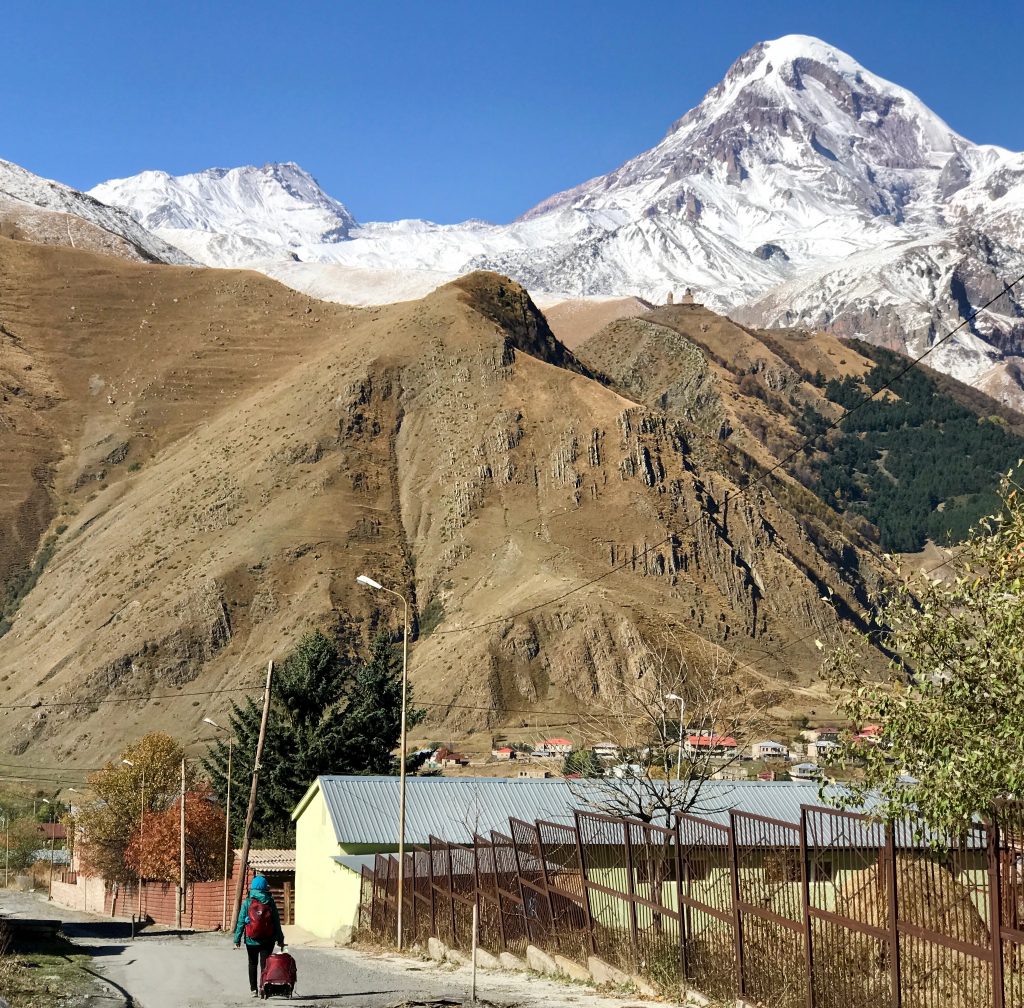
I know Marie Kondo is all the rage these days, but minimalism isn’t a new trend. It’s simply the idea of consuming mindfully. Owning less, buying less, having fewer material attachments.
In fact, most people in India and elsewhere lived minimalist lives before the days of television and social media. Before marketing, ads and influencers started telling us that we want more than we need.
How I ended up living out of 2 bags
Back in 2013, when I was contemplating a life of long term travel, I had cupboards, drawers and bags full of things I didn’t really need.
So I spent a few days taking stock of everything I owned. I gave away most of my clothes, shoes, books, appliances and assorted possessions to anyone who could use them. Gradually I gave up the apartment itself, and have been living out of two bags since.
Why minimalism – and how it can ensure sustainable living at home
Over the years, it’s felt mentally liberating to shed the weight of my material attachments. I know now, that my contentment has nothing to do with trips to a shopping mall or the latest fashion trend.
Harmless though it seems, fast fashion is one of the most polluting industries on the planet. So I’ve pledged that whenever I acquire something new, it will be recycled or upcycled, support a local cause and/or be environmentally sustainable.
Also read: The Ultimate Guide to Sustainable Fashion in India

Minimalist sustainable living practices
- Think about how much you really need: Use this time at home to re-evaluate what you really need. Perhaps you’re comfortable with a few sets of clothes and shoes. Perhaps your office regime demands more. Perhaps you’re too attached to some books but can consider swapping others, or donating them to a library. You could lay out all your things, and objectively assess what you must keep and what can go.
- Start slow: It’s great to be excited by sustainable living examples, but slow down a bit. We’d do more harm than good by getting rid of things we think we don’t need, only to buy them again later. In my case, while downsizing my possessions, I stored some backup stuff in the boot of a friend’s car. A while later, when he had to sell that car, I rummaged through it again to find a couple of essentials I’d been missing. You could similarly store some things to reconsider after a few months.
- Notice the inner changes: As you embark on a sustainable lifestyle journey to buy and own less, notice how your needs and wants change internally. Personally, I feel a lot less attached to what I still own and rarely ever crave material things. It’s pretty amazing.
Documentaries and books on sustainable living, especially minimalism
- Minimalism: A Documentary About the Important Things: Made by Joshua Fields Millburn and Ryan Nicodemus – the two guys who essentially made ‘minimalism’ a mainstream idea circa 2016. This America-centered documentary explores the American dream and materialism in western societies – but is pretty relevant to urban Indian lives.
- The True Cost: A documentary about the true cost of fast fashion and why we need to embrace a more sustainable lifestyle.
- Essential Zen Habits – Mastering the art of change, briefly: Essential Zen habits by Micronesian writer, runner and vegan Leo Bautata, on the art of embracing change, has been on my wishlist for a while.
- The Life-Changing Magic of Tidying Up: As someone who hasn’t really had a ‘home’ in a long time, I don’t exactly relate to Japanese author and much-loved organizing consultant Marie Kondo. But I know a few whose lives her book has changed!
Also read: How I Fit All My Life Possessions in Two Bags as I Travel the World.
2. Segregate, compost, reduce and recycle your waste
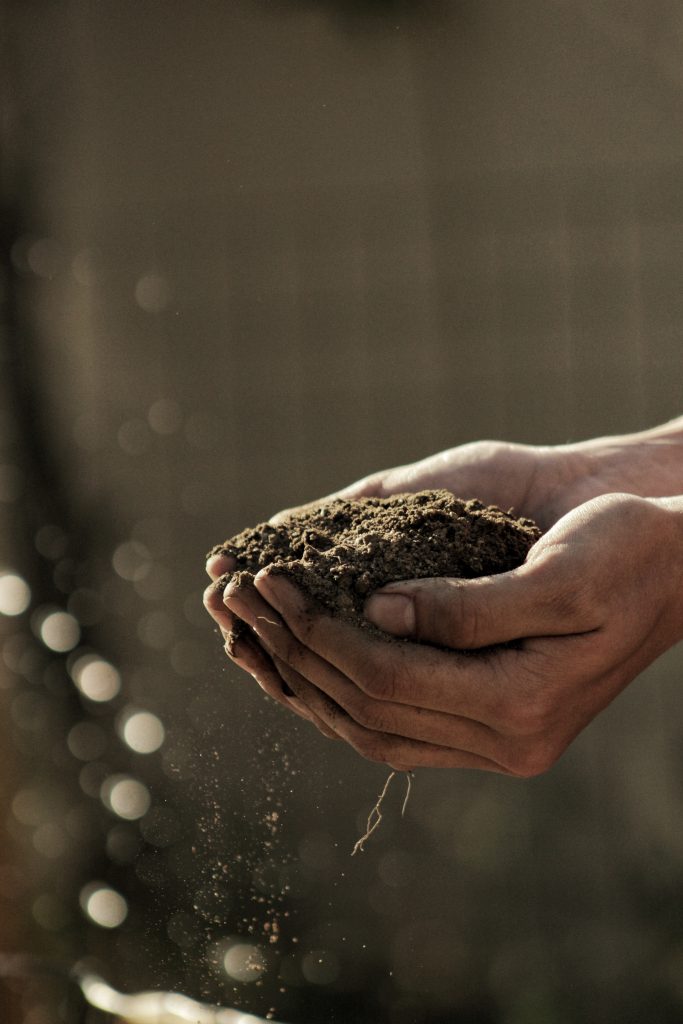
A few years ago, I visited a state-of-the-art waste management plant in Goa. At the conveyor belt, I saw workers sorting out recyclables from all kinds of waste. Curry covered boxes, plastic in all forms, rotting vegetables, tattered clothes, umbrellas, muck covered toys, even rotting carcasses! It is sickening that a fellow human should have to dig through all our waste just because we refuse to segregate it.
Since this is a semi-private waste plant, workers are given protective coats, gloves, a face mask and health insurance. But most ragpickers and informal waste workers (in India and other developing countries) have access to none of this.
Visiting that plant and meeting workers who once lived off the public dumping ground made me realize that the least we can do to adopt a sustainable lifestyle is to deal with our waste more mindfully.
I now consciously look for Airbnbs / homestays that segregate and compost their waste. As far as possible, I try to reduce my waste by avoiding things that come in single-use plastic, thereby reducing my junk food intake. And no matter where in the world I am, I keep my eyes and ears peeled for recycling spots to give my recyclable waste.
While in Cape Town, I decided to experiment with a month of being zero waste on the road – not easy but not impossible. I’ll be writing about that zero waste challenge soon.
How to segregate and compost waste
The conversation about waste seldom makes it to our living rooms. No wonder, my folks put up so much resistance against the simple act of segregating waste. But now that I’m locked down with them, they’ve finally relented!
The process is really simple. All you need to do is use two bins instead of one. All wet waste (food waste, soiled plain paper and anything biodegradable) goes into one. All dry waste into another.
For the wet waste, dig a pit in your backyard if you have one. Discard the wet waste in it once or twice a day, and cover with an equal amount of dry leaves.
If you live in an apartment, get yourself an Eco Bin, which allows easy and hygienic disposal of wet waste. In a few weeks, you’ll have compost to grow your own vegetables! See this comprehensive pit composting guide if you have a backyard or these indoor composting options.
The dry waste should ideally be sent to a recycling facility. Figure out if there’s a collection service or center in your vicinity. If not, perhaps you could arrange for community collection, to be sent to the nearest facility every week or month. Alternatively, discuss with your local ragpickers what they are able to salvage and try to find solutions to the remaining waste.
Also read: Zero Waste Stores in India to Cut Your Plastic Footprint

Tips for low waste and sustainable living at home
- Assess all your waste and find creative solutions: Consciously keeping track of all your dry waste for a few days can be eye-opening. Then it’s time to find creative ways of reducing it. Can you refuse, reduce, reuse, recycle or find alternatives to it? It’s how I switched from shower gel and shampoo bottles to bars, started making my own snacks and began sourcing plastic-free energy bars made on order.
- Get your house members on board: If you share your space with family or friends, it’s important to get their buy-in atleast for segregation if not a sustainable lifestyle entirely. Involving my folks in the ideation process (what to use to collect wet waste etc) helped. To ensure that the waste isn’t mixed up, I created a “dry waste” sign next to the regular dustbin as a reminder.
- Consider a community garden for collective composting: While in Cape Town, we lived in a studio with a small balcony. Since we weren’t staying long enough, it didn’t feel worthwhile investing in an eco bin to make compost. So I got in touch with a community garden nearby, who were happy for us to drop off our wet waste every couple of days to be composted. If we had stayed long enough, we would’ve bought our produce there. Win-win!
Plastic free eco living ideas
- Buy produce directly from farmers: Many towns and cities around the world have farmers markets, where farmers directly sell their produce without plastic packaging. Sharan’s organic farmer markets in Mumbai every Sunday, Dehradun’s Wednesday organic market, Cape Town’s weekend markets and Thailand’s Thursday stalls are just some of the places I’ve bought my produce in the past few years! It ensures a fair price to farmers and fresh organic produce that I can carry in my own cloth bags.
- Shop at zero waste stores / supermarkets that sell produce in bulk: Pretty much everything we consume – from lentils to nuts to detergent – comes in plastic packaging. While in Cape Town, I was delighted to find two zero waste stores, so I could buy essential grains, legumes etc in my own jars or bags. In Georgia, the Carrefour store sold everything from pasta to rice in bulk. In India, Chennai, Gurgaon and Goa have organic zero waste stores, while some kirana stores still sell in bulk.
- Make your own plastic-free alternatives: Instead of unhealthy store-bought snacks, I’ve been trying to make namkeens with mixed seeds and easy raw chocolate brownies at home. Instead of sugary store-bought beverages, I drink fresh juice and make my own iced tea. A sustainable lifestyle should ideally be healthier too.
- Reuse plastic creatively: Many people grow plants in discarded plastic bottles. Eco bricks – pet bottles densely packed with single-use plastic – are all the rage now and can ultimately be used to erect sturdy structures.
Also read: Plastic Free Living: 5 Steps to Embrace Single-Use Plastic Alternatives
3. Switch to a menstrual cup – one of the best sustainable living products out there!

I have to confess that the idea of inserting a menstrual cup in my vagina felt so scary that even after I bought one, I shied away from trying it for three whole months!
For the uninitiated, a menstrual cup is an eco friendly alternative to pads and tampons. The cups is made of health grade silicon, and inserted into the vagina to collect menstrual blood. Now that I’ve been using one for over a year, I can tell you it’s hygienic, safe and super comfortable!
The best time to experiment with a menstrual cup is when you’re staying home and have easy access to a comfortable bathroom – i.e. this lockdown!
Why I switched to a menstrual cup
My conviction to switch to a menstrual cup came while volunteering on a remote island in Cuba. I was surprised to spot single-use plastic on the seabed that wasn’t even available on the island! Those stunning corals and marine life were co-existing with plastic bags, shampoo bottles, straws and what not.
I had switched to “biodegradable pads” by that time, but further research revealed that they degrade only when discarded and composted separately. I couldn’t do that on the road, nor could I live with myself for sending 10-15 plastic pads to the landfill or ocean every month.
Tips to use a menstrual cup
- Sterilize the cup: Basically just put it in boiling water before and after your period each month. That ensures any bacteria on the surface is killed.
- Try different folds and positions to insert it: It took me a few periods to figure out how to get the cup in. I watched Youtube videos, read extensively about our inner structure and experimented with a bunch of different folds and positions. When I finally figured it out, I realized it doesn’t hurt. AT ALL!
- Use your pelvic muscles to remove it: I worried myself silly thinking of how I’d remove it when I finally managed to get it in. The relieving part is that it can’t get lost inside 😉 I learnt to use my pelvic muscles and breath to push it down a bit, then squeeze it between my fingers and pull it out.
Why a menstrual cup is among the most brilliant ideas for sustainable living
- An eco-friendly alternative: A menstrual cup can be used for upto 10 years with care – easily saving 1800+ single-use pads as trash. Definitely a worthwhile alternative for a more sustainable lifestyle.
- Easy to use and clean once you figure it out: The only other zero waste menstrual product is a cloth pad. It works like a regular pad, but needs to be washed after every use, which can be a pain. On the other hand, after the initial mental and physical challenges of figuring out a menstrual cup, it is super easy to use, maintain and carry.
- Physical activities are easier with a menstrual cup: I find it way easier to hike, swim, do yoga and other physical activities while wearing my cup. My biggest fear is that I’ll forget it’s inside!
- A long term investment: Considering that a menstrual cup can be used for a good few years, it works out way cheaper than pads in the long run. Both financially and environmentally.
Recommended brands of menstrual cups
I love my Lena Cup (bought on Amazon US while travelling in that part of the world) and absolutely recommend it.
My cup-verted friends recommend the SheCup, Cupvert Cup, Boondh Cup and Rustic Art Cup in India. I highly recommend buying cloth pads as a backup for low flow days. There are several options on Amazon India and Amazon US. A set of 4 suffices for me.
Also read: My Detailed Guide on How to Use a Menstrual Cup, With All Your Questions Answered
4. Creatively reuse and recycle what you already have
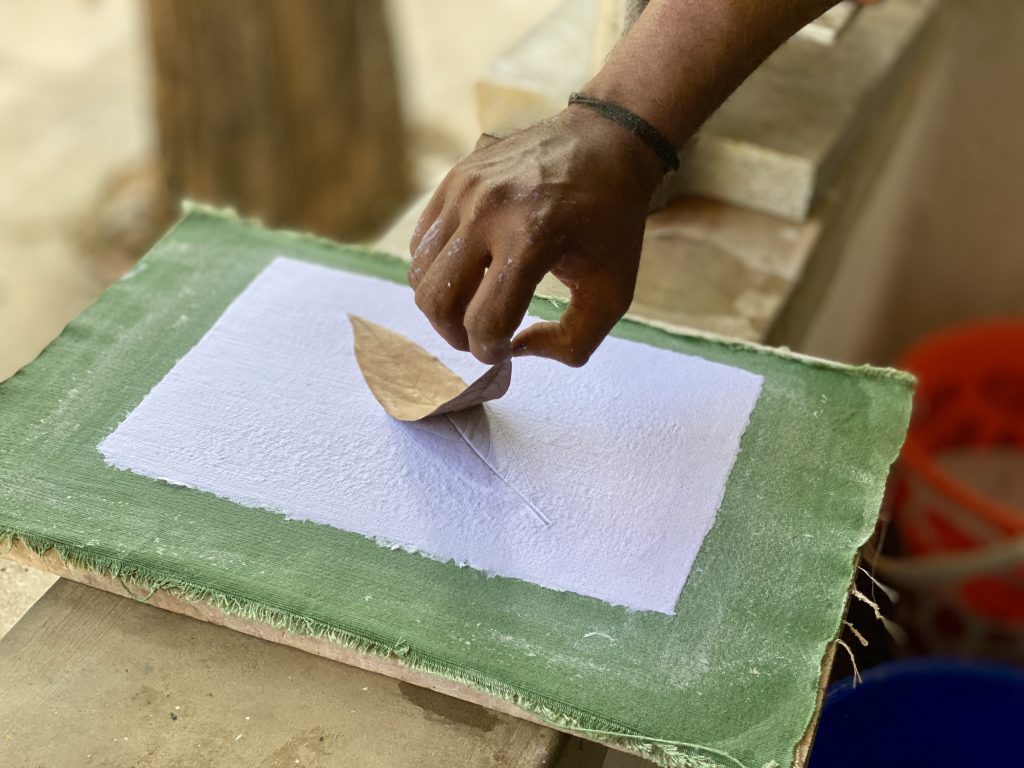
I’ve often found it hard to focus during this lockdown, with all the negativity and indefiniteness playing on my mind. But perhaps it’s the perfect time to unleash our creative spirit to do things it’s otherwise hard to find time for.
In February this year, I met small-scale entrepreneurs across Kerala who benefit indirectly from tourism through vocational jobs. I learnt how to upcycle old newspapers into artisan handmade paper. A sweet couple demonstrated how they recycle used candle wax to make creative candle designs. A tea planter turned tailor has been making cloth bags from old clothes so people can stop using single-use plastic bags.
In South Africa, I learnt how to make trendy wallets from used tetra boxes! In Myanmar, I met a women’s collective who upcycle used coffee and other plastic packets into cool bookmarks and lamp shades.
On my closed women-only Facebook group, one creative soul bought discarded wood from a ragpicker to make a cool sofa. Another made a hip bookshelf with old drawers!
Why reuse and recycle
I sometimes read about people making a move towards slow fashion and a plastic-free sustainable lifestyle by buying new “minimalism-friendly” things as they discard everything else.
And I get it, it’s tempting to buy that multi-purpose scarf thing on Instagram that can be worn 10 different ways. Or to throw out all plastic jars and buy a new set of glass jars to feel good about ourselves.
But here’s the thing. Sustainability and minimalism are pointless pursuits if we’re creating all this trash, or craving the next trendy minimal wear. We need to use what we’ve already got – for the maximum amount of time we can.

How to reuse and recycle during the lockdown
Limited access to non-essentials during the lockdown is the perfect opportunity to get creative. Google has tons of DIY ideas for whatever you need and how to make it based on what you already have at home.
After a long hiatus, I feel ready to acquire a new dress. So I’m trying to remodel my current one into a skirt, and upcycle one of my mom’s old sarees into a dress. We’ll see how the experiment goes 😉
In the next few weeks, my notebook will run out of pages, so I’m going to try making handmade paper. It’ll be hard to replenish my shampoo and conditioner bars, so I’ll try to make a version at home. Many of my friends are making their own cloth masks and sanitizers. The possibilities are endless!
Also read: 15 Responsible Travel Tips for Authentic, Meaningful Experiences on the Road
5. Embrace a compassion-driven lifestyle
Have you been wondering how the hell life went from being business as usual to this scary, bizarre lockdown situation?
Scientists pretty much agree that the source of the COVID-19 outbreak was a wet market in Wuhan, China. Hens, fish, snakes, birds, porcupines, pangolin, even wolf pups are sold there – to be cooked and eaten. The virus likely came from bats, and was possibly transmitted by a snake, pangolin or chicken, into humans (pangolin is the prime suspect). That makes it a zoonotic disease, one that spread from animals to humans.
Similarly Ebola, SARS, bird flu, nipah etc are all infectious outbreaks that began in bats, but spread to humans through hunting, pig farms, poultry farms and animal markets. Deforestation, biodiversity loss and closer interaction with wild animals helped create the perfect breeding grounds.
There’s been a rise in the spread of infectious diseases in the last 50 years. Our population has grown. But also we have more livestock since 1960 than the last 10,000 years of domestication combined! As we use more animals – for trade, farming, food etc – we increase the probability of cross-species transmission of infectious diseases. Dr Gauden Galea, WHO Representative, China, said in an interview with CNN: “As long as people eat meat, there is going to be some risk of infection.”
It’s not yet well understood how exactly zoonotic diseases work, but I guess it’s pretty clear that they are rooted in the abuse and misuse of animals and their habitats.⠀ ⠀
So perhaps this lockdown is a good time to find our inner compassion to stop abusing animals and nature, and reduce the danger to our own lives?
Why turn vegan (or consume less animal products)
- The animal suffering: Being vegan is simply a pledge to stop exploiting animals – to the greatest extent possible. That means not using animals for their meat, eggs, milk etc. Not separating them from their babies or castrating them. Not buying products made of leather, silk, wool and down feather. Not using toiletries and cosmetics tested on animals. Not supporting zoos, not riding animals, not using them to carry our loads. Not supporting the pet industry. If it involves an animal, first google to see what it entails.
- The environmental impact of animal based food: A whopping one-third of the world’s freshwater is currently used to produce animal foods, including meat and dairy. Nearly 80% of all agricultural land is used for livestock. 14.5% of global greenhouse gas emissions – and 12% of those in India – are attributed to raising animals for food (in comparison, flying contributes 2% of global emissions). Without meat and dairy consumption, global farmland use could be reduced by more than 75% – an area equivalent to the U.S., China, the European Union and Australia combined – and still feed the world!
- The health benefits of plant-based food: Vegan diets haven’t been studied long, but there is plenty of evidence to suggest that meat and milk are associated with cholesterol, heart disease and blood pressure. I’ve met people of various age groups in India, Iran and Germany who’ve reversed diabetes, thyroid and other health conditions by switching to a whole foods plant based lifestyle.
Tips on sustainable living through food (or how to turn vegan at your own pace)
- Research and work out your motivation: Considering that food is an integral part of our daily life, experimenting with being vegan – even for the duration of the lockdown – is a choice that will stare you in the face everyday. So the first step should be to read articles and books, and watch documentaries and videos to firm up your motivation. I even did some primary research by living with small-scale cattle farmers in the Himalayas and visiting free-range dairy farms, sheep rearing facilities, animal rescue sanctuaries and horse riding estates. I’ve learnt to ask tough questions and gathered some shocking answers.
- Transition at your own pace and look online for alternative recipes: Depending on how sustainable lifestyle changes work for you, you might want to take it slow or do it overnight. Maybe start with a firm decision to not buy anything that contains animal products – including groceries and cosmetics. Maybe start with cooking one vegan meal a day. If you feel the need for vegan alternatives to milk, butter, cheese etc, a simple google search will reveal a ton of easy recipes.
- Figure out how to get your nutrition on a vegan diet: This lockdown is a good time to embrace vegan food that is also local, seasonal and healthy. Most basic Indian food can easily be veganized without ghee, paneer, butter etc. Leafy greens, seasonal veggies, fruits, nuts, seeds, lentils, chickpeas, beans etc are ready available. Start with this guide by the NHS to figure out nutritional needs. Note that most people – vegan or not – are deficient in Vitamin B12 and D3, so consider supplements.

Inspiring documentaries and books about veganism
- Animal intimacies: Written by anthropologist Radhika Govindarajan, Animal Intimacies is a book about farming and mountain life in Uttarakhand. Written from the social perspective of small scale farmers but an insight into the life of domesticated hill animals as well. I found myself tearing up reading it.
- For a moment of taste: An in-depth expose of what happens to animals commonly used for meat, eggs and dairy foods in India, written by investigative researcher Poorva Joshipura. I just ordered my copy.
- Why we love dogs, eat pigs and wear cows: A book by social psychologist Melanie Joy on the psychology of eating meat.
- Earthlings: An intimate look at how humans have used animals for economic gains. Narrated by Joaquin Phoenix. Earthlings might be hard to watch, but if you feel like turning it off, remember that we’re literally paying to make it happen.
- Cowspiracy: The first documentary to introduce the environmental impact of animal-based food to a mass audience. Must watch if you’re interested in pursuing a sustainable lifestyle.
Also read: 11 Tips to Ease Your Transition Into a Vegan Lifestyle
How to Travel as a Vegan and Find Delicious Food Anywhere in the World
6. Grow your own microgreens and other food
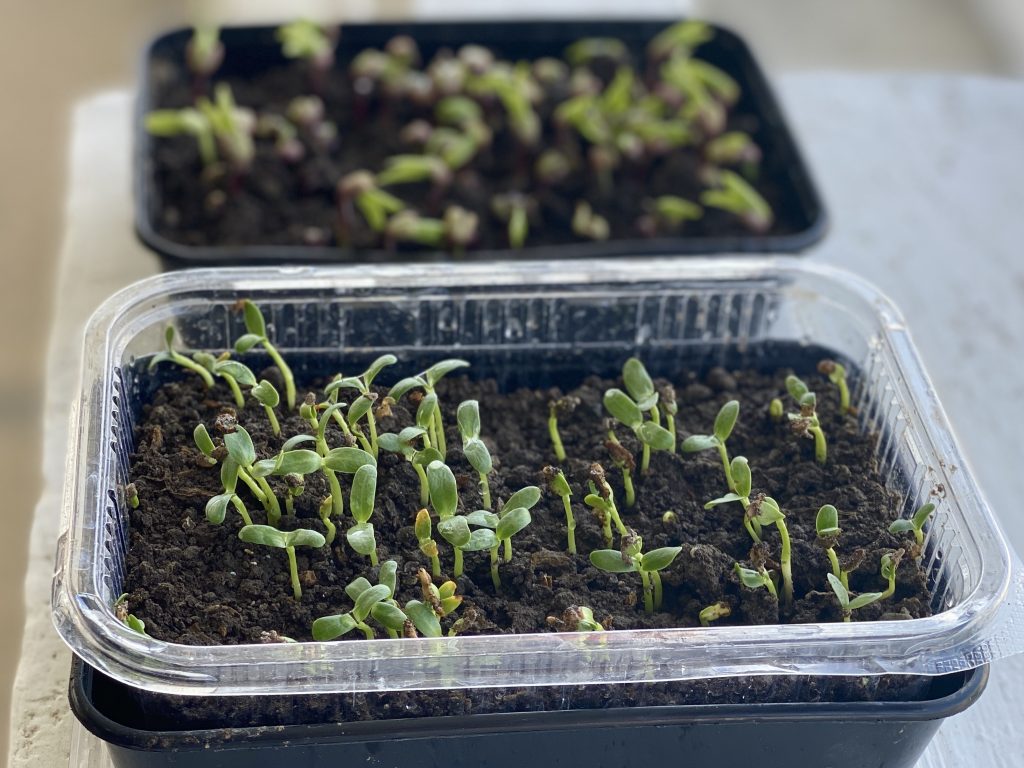
Nothing’s given me as much joy in this lockdown as growing my own microgreens! We’ve all likely sampled microgreens – those little plants with a couple of leaves that often appear with a starter or dish at a cafe or restaurant.
But I was first introduced to their amazing nutritional content at The Sunshine Food Co in Cape Town. The owner Elisha fell in love with farming microgreens, and now offers the most badass vegan activated charcoal burgers I’ve ever had.
So I read up, watched a couple of videos and drew inspiration from Instagram to experiment with growing my own. In reused takeaway containers filled with soil, I sowed mustard, urad dal and basil seeds. And was amazed that with little effort, they grew beautifully in a couple of weeks! I added them to my smoothies and sandwiches.
I then managed to get okra, bitter gourd and black eyed pea (lobia) seeds from an organic farmer, though those will take a while to grow.
The joy of growing your own food and self sustainable living
This lockdown has left many of us craving to reconnect with earth, and growing our own food is a therapeutic way of doing that. It also allows us to be more self-sustainable in an uncertain future.
Besides, it’s rather reassuring to consume something home-grown, that you know hasn’t been infiltrated with chemical fertilizers or pesticides. And I can swear it teaches us to value the hardwork of our farmers enough to never negotiate for their produce again!
Practical tips to grow produce at home
- Know that we can grow stuff no matter where we live: Whether we have a backyard garden, a rooftop or just a window, it’s possibly to grow atleast some of our own food. Grow herbs in the garden, transform a terrace into an urban rooftop farm or try soil-less farming with hydroponics.
- Microgreens are the easiest and quickest to grow: Even though I’ve spent time living at / near organic farms and learnt a lot in theory, I never end up staying long enough to see the seeds reach the table. That’s part of the reason I love microgreens. They’re easy to grow, adaptable to most weather conditions and packed with nutrition. But most importantly, they can be harvested within 2-3 weeks!
- Keep it organic: My folks, like many others, thought ‘organic’ is a myth. But since I’m here a while, I started getting produce delivered from local organic farmers. Everything from desi tomatoes to peaches to lemons taste so much more flavorful that even my folks are noticing the difference. As you grow things, keep it simple – natural, pesticide free and chemical free. You’re sure to grow into this sustainable lifestyle and notice the difference in taste.
Also read: How to Indulge Your Wanderlust at Home
An Eco-Conscious Wellness Retreat in India for Yoga, Creative Food and Vitamin Sea
7. Catch up on the health of the planet
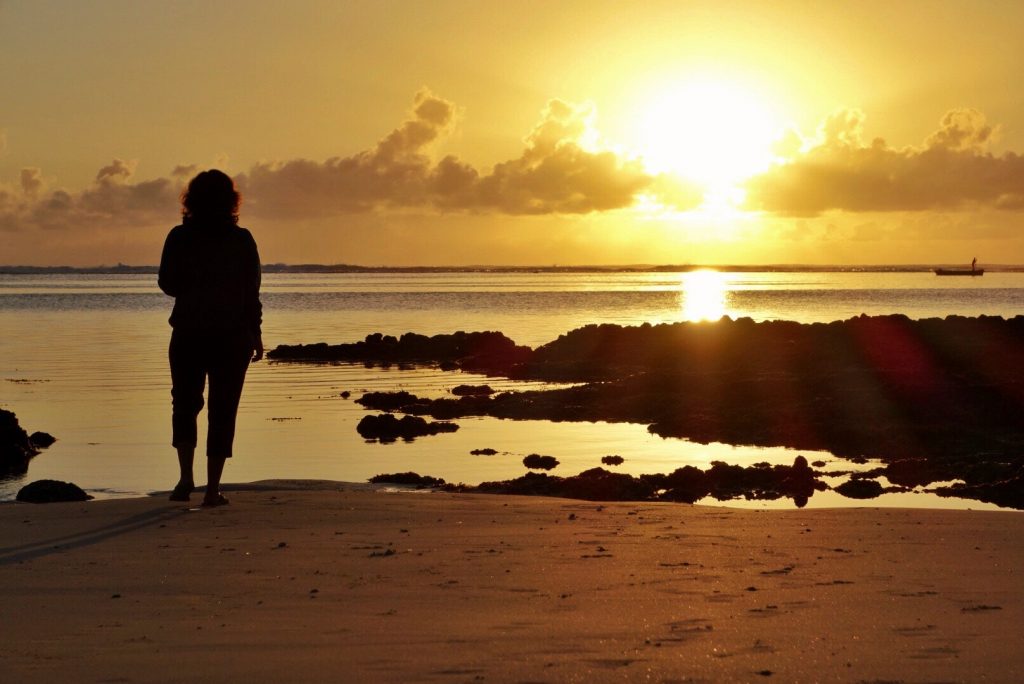
I know these are overwhelming, unprecedented times. I have good days and bad each week. I feel angry, helpless, sad, guilty and a whole other gamut of emotions.
But this is also a time of introspection. A chance to learn more about this genius planet of ours without stepping out. An opportunity to chase a deeper understanding of the relationship of our species with nature, man-animal conflict, climate change, social justice, animal rights and impactful ways to pursue a sustainable lifestyle.

Unlike pandemics of the past, we’re lucky to have virtual access to the world through Netflix, zoom, webinars, lives, kindle and other technology. Tune into a sustainable living documentary, pick up sustainable living books and follow sustainable living blogs.
Perhaps the greatest favor we can do ourselves is to treat this “great pause” as a chance to unlearn, rethink and realign our lives. In a way that is personally gratifying but also reduces our impact on the natural world around us.
Also read: Inspiring Women I Met in Bhutan – and What Happiness Means to Them
Have you committed to any sustainable living ideas during the lockdown? What do you plan to try?
I’m now accepting guest posts on my blog on responsible travel and green living. If you’d like to contribute a story, please see my guidelines here.
If you’re a sustainability-minded rebel struggling with your life choices, join my closed women-only Facebook group.

Hi there! I’m Shivya, and I started this travel blog back in 2011, when travel wasn’t trendy, Instagram didn’t exist and AI wasn’t a thing (simpler times, I know!). I write about slow, meaningful and conscious travel – that is good for us, the places we visit, the people we meet along the way, and the planet at large. Settle down, grab a cup of tea, and read stories that remind you of the essence of travel. I’m so glad you found me!


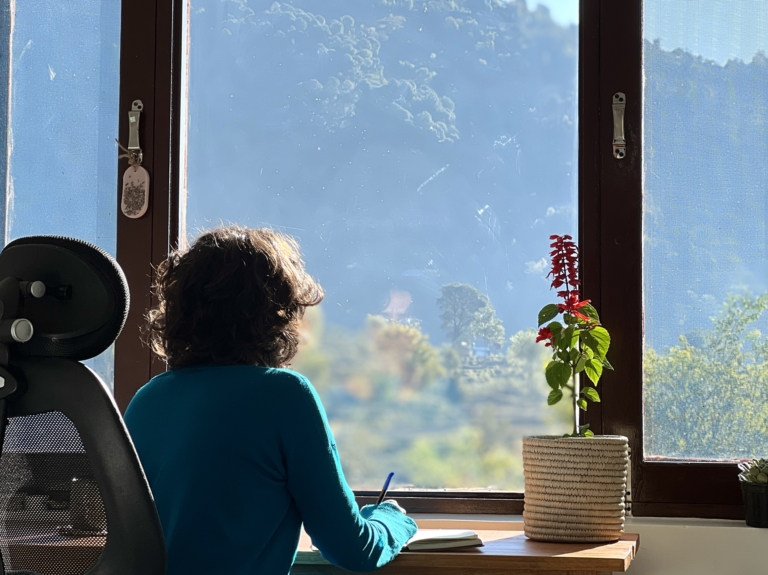

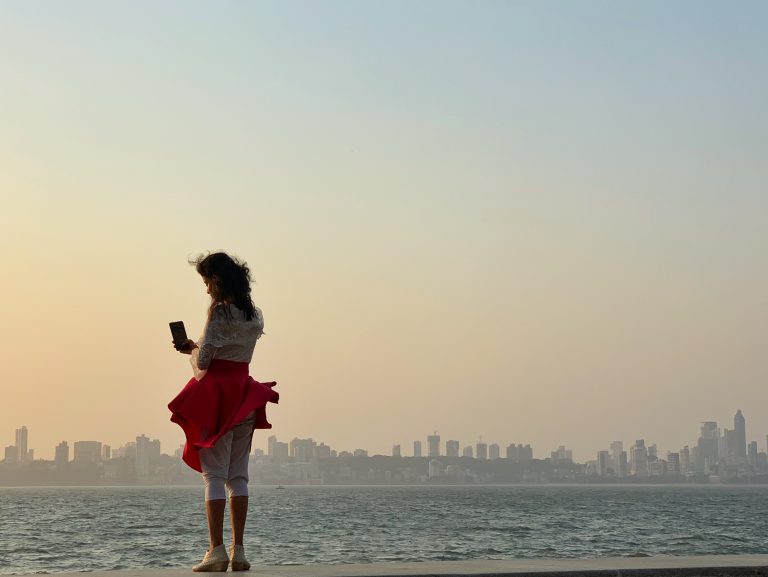
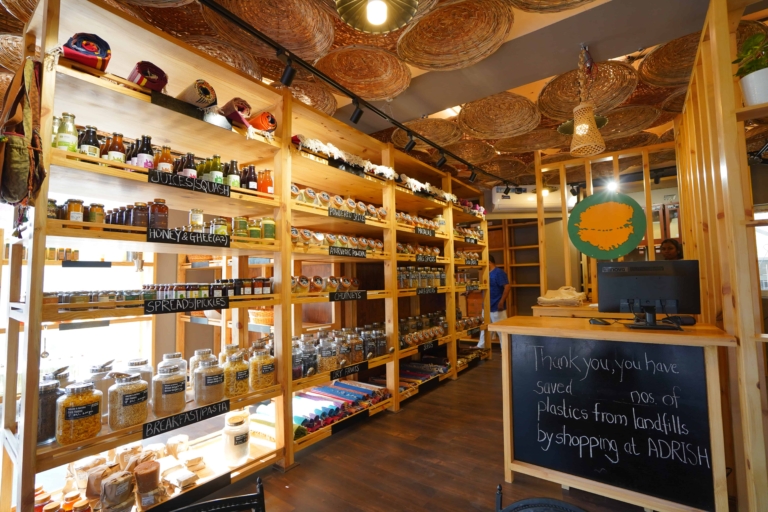


Amazing article Shivya! This post is going to be the best reference for all of us looking to adopt a sustainable lifestyle.
Thanks, and so glad to hear that. Makes the days of work poured into this feel worthwhile!
This is superb! Thanks for sharing Shivya!
Thanks Swati, hope it helps!
Very inspiring and practical!
Thanks Vaibhav; let me know if you end up experimenting with any of these ideas.
This is how we can convert the adversity into an opportunity……and growing microgreens by own actually gave me satisfaction and happiness. Nice work Shivya..
Microgreens are amazing right? I need to plant my next batch soon. And yes, it’s a way to divert our minds away from all the negativity too.
Yes they are amazing……1st time i have tried to grow them and indeed it was awesome experience. And yes can try “thode me jyada” by removing unwanted things which are just hanging around…this would be new mantra for sustainable lifestyle…
S, this is not an article but a book for everyone to read and follow to the extent possible. Wonderful insights and easy to think in mind. Superb!!
Thanks Diganta! And haha, it is literally a book but I wanted to keep it as practical as possible.
I love this. You raise all the important points, such as the fact that buying new trendy products just because they’re sustainable isn’t reallt sustainable at all, or how much more damage animal agriculture causes than flying which we are often criticized for.
And I think the most important thing to keep in mind is that a more sustainable lifestyle is also better for us. This is not just about making sacrifices and then feeling awful. We don’t have to choose the hardest part but those things that resonate with us and that we will also benefit from. Minimalism doesn’t have to mean we deprive ourselves of something, but that we also save money for things that bring us more joy.
Looking forward to additional discussions in the group! 🙂
Totally agree with you Nina. It’s not about sacrifice at all – when we consume less but more mindfully, there’s definitely more joy (and less craving) in that consumption.
And yes, those trendy ‘minimalism-oriented’ products drive me crazy sometimes, though the lure is real!
Shivya,
I must disagree with you. In my honest opinion, living a nomadic lifestyle ( on flights and taxis ) has more carbon foot print than everything else from above put together.. Taking flights and taxis as frequently as you do is worse than eating meat or using plastic.
Travel bloggers in general are putting remote islands, far-off villages and pristine, un-touched locations on the travel map making it appealing for more and more people to travel. The more people they try to lure, the more they get paid.
I feel that by suggesting ‘us’ to lead a sustainable lifestyle, you are asking us to save pennies while you are irresponsibly throwing away dollars !
I am happy to know that you are mindful about the environment ( I read your previous blogs on veganism too). But how can you have both – sustainability and excessive travel ? Shouldn’t travel be limited to once a year or once few years to reduce impact on the environment ?
On the other hand, if you want to take a joy ride and enjoy the kick of life, pls do. I respect that totally ! But dont be under a misapprehension that you are leading a sustainable lifestyle.
I agree with some of the points you’ve raised. But just by virtue of travelling or not travelling, one doesn’t become more or less sustainable. For instance, I could be stationed in one place, live in an air-conditioned house in the middle of an unsustainable city, commute everywhere by a private car, consume mindlessly and take just one luxury vacation to an unsustainable resort halfway across the world. Or I could be travelling slow, doing land journeys by public transport where my passport allows it, staying in eco-friendly homes, being mindful of my waste / consumption / food choices etc. You know?
Personally, there’s no doubt I’ve taken too many flights in my early years as a travel writer – not knowing how to deal with the lure of short travel assignments in far off corners of the world. But atleast in the past 3 years, I’ve moved towards slower travel, fewer flights and more creative ways to make my living through travel. Can sustainability and mindful travel go hand in hand? I think so, atleast I’m trying to make it happen.
Definitely one of the best articles regarding sustainable development.
Thanks Santosh, glad so many people are finding it useful!
This is the ultimate guide to Sustainable Living. I have been focusing on minimalism for quite sometime now. This comes as a whole some guide to help me achieve it. Thanks for this post Shivya!
Thanks Divya! I’ve realized that writing these posts are a reminder of everything else I need to do that I’ve been putting on the back burner. Glad this post is resonating with so many!
Amazing!!. I have to admire you for your approach. Minimalism is not for me, but can’t help admire what you are doing
I guess we can all have our definitions (and extent) of minimalism 🙂
“In South Africa, I learnt how to make trendy wallets from used tetra boxes! In Myanmar, I met a women’s collective who upcycle used coffee and other plastic packets into cool bookmarks and lamp shades.”
Do you have other blog posts and or documentation of these upcycle endeavors? I’d like to learn more about them and specifically share the bookmarks/lamp shades with friends who would enjoy this creative entrepreneurship.
Thanks kindly!
Unfortunately I haven’t gotten around to writing about them, but plan to create a blog post with all these amazing initiatives in the near future.
The ability to be sustained in certain areas of life means that you’re not depleting resources. Whether you’re concerned with saving trees, using less energy, or saving water, sustainable habits will support these (and many more) natural resources.
Minimalism and Zen habits are some of the key lifestyle goals that we should aspire to clinging onto. These are sustainable and at the same time help avoid lifestyle inflation. BTW, I’m a big fan of yours. Stay safe, keep sharing!! 🙂
What a thought provoking post. We have spent the last two years travelling Europe in a motorhome and had to stop this year. We decided to develop a plot of land and grow our own fruit and veg…now we are almost self sustaining and it feels amazing, one of the most rewarding things we have ever done. Not sure yet whether we will return to our old way of life, but if we do it will definitely be slow travelling with an eye on sustainability.
I’m pleased to say I am aligned with this way of thinking. I can’t understand how anyone can continue to ignore the desperate situation we are in, certainly for those who have children! My motivation when choosing a greener way of doing things is always the next generation and what we are leaving them. I wish there were more like you – staying so respectful of our stunning planet. Namaste.